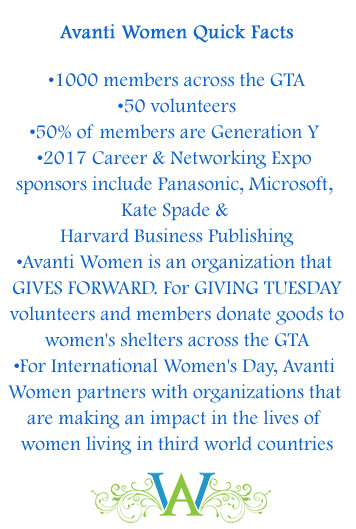
Alex Koch
In business, as in life, ignorance of the law is not a legitimate defence for violating it. Thank goodness Alex Koch, founder and principal at Insight Legal, is committed to simplifying the legal aspects of entrepreneurship for small business owners. I’m thrilled to have her share her legal expertise on business structures, in this week’s Write-or-Die Girl column.
With every new venture, there are new challenges. Not all, but some challenges can be avoided with better planning. One of the most common steps overlooked by new businesses is choosing the appropriate business vehicle. Selecting a business structure may not seem as important when you are trying to turn an idea into a business venture; however, it is one of the most important pillars on which your business is going to stand, meaning that it is something that must be given thought to at the outset.

Most businesses use one of the following five structures:
- Sole proprietorship;
- Partnership;
- Joint venture;
- Corporation; and
- Co-operative.
Each of the above business structures has unique features and the choice of a business vehicle will depend on the individual needs of your business. We will briefly discuss some of the advantages and disadvantages of each business structure below.
Sole proprietorship
 A sole proprietorship is the most commonly used form of organization by new businesses and startups while their costs of operation and income are low. In a sole proprietorship, one individual owns and controls the business. This type of business structure does not require cumbersome reporting to regulatory authorities and thus is easy to establish and maintain. Nonetheless, there are some registration requirements applicable to sole proprietors. For instance, if a sole proprietor carries on business under a name other than his/her legal name, he/she must register such trade name. It is prudent for a sole proprietor to conduct a name search prior to registering a business name to ensure that the chosen business name is not the same as, or similar to, the name of an existing business.
A sole proprietorship is the most commonly used form of organization by new businesses and startups while their costs of operation and income are low. In a sole proprietorship, one individual owns and controls the business. This type of business structure does not require cumbersome reporting to regulatory authorities and thus is easy to establish and maintain. Nonetheless, there are some registration requirements applicable to sole proprietors. For instance, if a sole proprietor carries on business under a name other than his/her legal name, he/she must register such trade name. It is prudent for a sole proprietor to conduct a name search prior to registering a business name to ensure that the chosen business name is not the same as, or similar to, the name of an existing business.
As with other business vehicles, there are some disadvantages of operating a business as a sole proprietorship. For instance, a sole proprietorship is not considered to be a separate person under the law meaning that taxes and liabilities of the business are borne by the sole proprietor, making sole proprietorships one of the riskiest business vehicles since (1) the sole proprietor may pay more taxes as he/she will not be able to take advantage of the lower corporate tax rate; and (2) the sole proprietor may be held personally liable for acts or omissions of the sole proprietorship. Further, it is difficult for a sole proprietorship to obtain financing for the business as it may only draw from personal finances or loans and its ability to obtain a loan will depend on the personal credit of the proprietor. Lastly, a sole proprietorship ends upon the death of the sole proprietor.
Partnership
 A partnership is used as a business vehicle when two or more individuals decide to engage in a business venture and wish to share the profits and liabilities of the business. Discussed below are three types of partnerships. While each type of partnership has its unique features and registration requirements, there are certain features that are shared by all types of partnerships. For instance, all of the types of partnerships are similar to sole proprietorships with respect to liability and tax repercussions discussed above, with each partner reporting losses and income on his/her personal returns.
A partnership is used as a business vehicle when two or more individuals decide to engage in a business venture and wish to share the profits and liabilities of the business. Discussed below are three types of partnerships. While each type of partnership has its unique features and registration requirements, there are certain features that are shared by all types of partnerships. For instance, all of the types of partnerships are similar to sole proprietorships with respect to liability and tax repercussions discussed above, with each partner reporting losses and income on his/her personal returns.
General Partnership
A general partnership is a relation between two or more individuals (or companies) carrying on a common business. Similar to sole proprietorships, general partnerships must register their name if they plan to use any name other than the first and/or last names of the partners. While it is possible for a general partnership to operate without a partnership agreement as the Partnerships Act guides the conduct of a partnership in Ontario, most prudent partners execute a Partnership Agreement to define their business and their relationship to one another.
Limited Partnership
A limited partnership consists of at least one general partner and at least one limited partner. The general partner has all the rights, liabilities and responsibilities that a partner may have in a general partnership. On the other hand, the limited partner contributes to the business in form of capital and/or assets and is prevented from becoming involved in the day-to-day management of the partnership. Given their status as limited partners and their inability to participate in the management of the partnership, limited partners enjoy reduced liability. A limited partner’s liability is limited to the value of money and other property the limited partner contributed or agreed to contribute to the limited partnership. If a limited partner becomes more involved in the day-to-day management of the partnership, he/she risks losing his/her limited status and exposes him/herself to the same liabilities as a general partner. For this reason, it is important for partners to have a well drafted Limited Partnership Agreement that clearly defines the responsibilities of each partner. Unlike general partnerships, limited partnerships must register their business (and not simply their name) with governmental authorities.
Limited Liability Partnership (“LLP”)
An LLP may only be used as a business vehicle by members of professional associations such as lawyers, certified accountants and doctors. This structure allows the partners to limit their liability to the extent of their own wrongdoing thus protecting themselves from liability with respect to acts or omissions of the other partners. Unlike with other forms of partnerships, LLPs are burdened with more cumbersome obligations such as (1) a requirement to have a signed Limited Partnership Agreement; (2) a requirement to include the letters “LLP” in the name of the partnership; (3) registration with the Ministry of Government Services; and (4) a requirement to maintain a minimum amount of liability insurance.
Joint Venture
 A joint venture (“JV”) is used when two or more individuals or businesses wish to bring their resources together to achieve a common business goal. There is an effort made by the parties in a JV to work together on a common project for a limited period of time. There can be many different reasons for forming a joint venture including business expansion, selling of products through the distribution network of a bigger company, moving into new markets, sharing resources, sharing expertise, new product development, etc. Unlike with partnerships, there is no legislative document that governs the relationship of two venturers, making it very important for the venturers to capture their intentions and relationship in a legal document. A Joint Venture Agreement will include various detailed provisions including those dealing with capital invested by each party, how profits will be shared, responsibilities of each venturer, the extent of each venturer’s liability, ownership of intellectual property and process of dissolution of the joint venture. A well drafted Joint Venture Agreement can help each party avoid lengthy and costly litigation to resolve matters that may arise.
A joint venture (“JV”) is used when two or more individuals or businesses wish to bring their resources together to achieve a common business goal. There is an effort made by the parties in a JV to work together on a common project for a limited period of time. There can be many different reasons for forming a joint venture including business expansion, selling of products through the distribution network of a bigger company, moving into new markets, sharing resources, sharing expertise, new product development, etc. Unlike with partnerships, there is no legislative document that governs the relationship of two venturers, making it very important for the venturers to capture their intentions and relationship in a legal document. A Joint Venture Agreement will include various detailed provisions including those dealing with capital invested by each party, how profits will be shared, responsibilities of each venturer, the extent of each venturer’s liability, ownership of intellectual property and process of dissolution of the joint venture. A well drafted Joint Venture Agreement can help each party avoid lengthy and costly litigation to resolve matters that may arise.
Some advantages of forming a joint venture include:
- Market access – a company/individual entering a new market may join forces with a company already in such market to take advantage of the established company’s distribution and supply network.
- Broad resource base – when two parties come together to achieve a common goal they bring together two teams forming a larger resource base.
- Access to capital and expertise – a relatively smaller business or a startup can gain access to capital and expertise through the other, usually more established, joint venturer.
Few disadvantages of using a joint venture as a business vehicle are:
- Complicated relationship management – when two individuals or companies get together they may have very different ideas about operation of the business due to factors such as experience in the field, technical know-how, market know-how, etc.
- Managing two businesses – individuals or businesses that enter into a JV also have other business and/or a routine job which also will need their time and attention. Thus, one needs to find the right balance to manage both during the course of the JV.
- Finding the right balance in terms of goals – it is difficult but very important to define goals to help each venture understand and plan for better performance during the course of JV.
Corporation
 A corporation is a legal entity that is separate and distinct from its owners. Corporations enjoy most of the rights and responsibilities that a natural person possesses; that is, a corporation has the right to enter into contracts, loan and borrow money, sue and be sued, hire employees, own assets and pay taxes. A corporation is also the most regulated form of business structure. Further, it is more expensive to set up, maintain and dissolve. When incorporating a business, it is very important to determine whether the company should be incorporated under federal or provincial jurisdiction. The decision to incorporate either federally or provincially can be based on a number of factors such as, price, the geographic area of operation or proposed operation of the business and the need to protect the business name across the country. Choosing a jurisdiction can have important ramifications for a business for instance, for a business interested in expanding nationally or in securing a business name nation-wide, a federal incorporation may be preferable. On the other hand, provincial registration may be preferable when the operation of a business is limited to one or few provinces only.
A corporation is a legal entity that is separate and distinct from its owners. Corporations enjoy most of the rights and responsibilities that a natural person possesses; that is, a corporation has the right to enter into contracts, loan and borrow money, sue and be sued, hire employees, own assets and pay taxes. A corporation is also the most regulated form of business structure. Further, it is more expensive to set up, maintain and dissolve. When incorporating a business, it is very important to determine whether the company should be incorporated under federal or provincial jurisdiction. The decision to incorporate either federally or provincially can be based on a number of factors such as, price, the geographic area of operation or proposed operation of the business and the need to protect the business name across the country. Choosing a jurisdiction can have important ramifications for a business for instance, for a business interested in expanding nationally or in securing a business name nation-wide, a federal incorporation may be preferable. On the other hand, provincial registration may be preferable when the operation of a business is limited to one or few provinces only.
When a business is incorporated federally it must register in every province where it conducts business and make annual filings federally and provincially. On the other hand, a provincially incorporated business must only register and make yearly filings in the province of its incorporation.
Regardless of whether a business is federally or provincially registered, as discussed above, one of the key benefits to using a corporation as a vehicle for a business is that a corporation is considered a person under the law. As such, corporations get to take advantage of:
- Continuity in case of death or severance of any shareholder as the company does not dissolve when a shareholder departs or dies;
- A lower corporate income tax rate;
- Reduced liability for the company’s shareholders and directors of the company;
- The ability of the company’s shareholders to transfer shares;
- The ability to grant stock options to its employees; and
- Greater access to financing.
Some disadvantages of using a corporation as a vehicle for a business are:
- The cost, time and requirement of expert advice to register, maintain and dissolve a corporation; and
- The requirement to file separate tax returns for the company and for each individual shareholder.
Co-operative
 A co-operative is an organization where its members join together with a common goal of sharing their resources in a democratic way. Unlike with corporations where the voting power of each shareholder depends on the amount and class of shares held, co-operatives normally have a one person one vote policy allowing each member to contribute to the decision-making process of the company. Co-operatives can be structured as a not-for-profit or for-profit organization and just like corporations, co-operatives can be incorporated provincially or federally. What makes most co-operatives different from corporations however, is the fact that members of co-operatives normally make policies and by-laws for their decisions. While co-operatives allow businesses to operate in a democratic fashion, this structure may prevent progress in a business as it may take significantly longer for co-operatives to reach a decision – especially if there is a high number of members.
A co-operative is an organization where its members join together with a common goal of sharing their resources in a democratic way. Unlike with corporations where the voting power of each shareholder depends on the amount and class of shares held, co-operatives normally have a one person one vote policy allowing each member to contribute to the decision-making process of the company. Co-operatives can be structured as a not-for-profit or for-profit organization and just like corporations, co-operatives can be incorporated provincially or federally. What makes most co-operatives different from corporations however, is the fact that members of co-operatives normally make policies and by-laws for their decisions. While co-operatives allow businesses to operate in a democratic fashion, this structure may prevent progress in a business as it may take significantly longer for co-operatives to reach a decision – especially if there is a high number of members.
Planning ahead can help you avoid complex and lengthy dispute resolution. Choosing the right structure for your business and complying with the applicable legal requirements will help you ensure the sustainability and continuity of your business. The ideal structure can help you protect yourself from complicated disputes and will help define the role, responsibilities, profits and liabilities of each person involved.
Each business venture is unique and requires special consideration. Please contact Insight Legal at info@insightlawyers.com and we will help you select a business structure that meets your business needs.

 Nix EMFs: “First and foremost, cut down on high levels of EMFs; they make you tired and your brain foggy,” she advised. The easiest way to do this is by introducing plants—which reduce air pollution and noise— and flowers—which bring about chi—into a space.
Nix EMFs: “First and foremost, cut down on high levels of EMFs; they make you tired and your brain foggy,” she advised. The easiest way to do this is by introducing plants—which reduce air pollution and noise— and flowers—which bring about chi—into a space. sufficient to trigger fresh ideas.
sufficient to trigger fresh ideas.


 “If you’re looking for an audience of prospective customers searching the web, blogging is one of the best, if not the best, ways to do it,” he said.
“If you’re looking for an audience of prospective customers searching the web, blogging is one of the best, if not the best, ways to do it,” he said.
 Most reasonable professionals are aware that there are certain behaviours that are inappropriate in an office setting. For example, whistling while you work is likely to irk your neighbours, and poor hygiene is just plain icky!
Most reasonable professionals are aware that there are certain behaviours that are inappropriate in an office setting. For example, whistling while you work is likely to irk your neighbours, and poor hygiene is just plain icky!

 A sole proprietorship is the most commonly used form of organization by new businesses and startups while their costs of operation and income are low. In a sole proprietorship, one individual owns and controls the business. This type of business structure does not require cumbersome reporting to regulatory authorities and thus is easy to establish and maintain. Nonetheless, there are some registration requirements applicable to sole proprietors. For instance, if a sole proprietor carries on business under a name other than his/her legal name, he/she must register such trade name. It is prudent for a sole proprietor to conduct a name search prior to registering a business name to ensure that the chosen business name is not the same as, or similar to, the name of an existing business.
A sole proprietorship is the most commonly used form of organization by new businesses and startups while their costs of operation and income are low. In a sole proprietorship, one individual owns and controls the business. This type of business structure does not require cumbersome reporting to regulatory authorities and thus is easy to establish and maintain. Nonetheless, there are some registration requirements applicable to sole proprietors. For instance, if a sole proprietor carries on business under a name other than his/her legal name, he/she must register such trade name. It is prudent for a sole proprietor to conduct a name search prior to registering a business name to ensure that the chosen business name is not the same as, or similar to, the name of an existing business. A partnership is used as a business vehicle when two or more individuals decide to engage in a business venture and wish to share the profits and liabilities of the business. Discussed below are three types of partnerships. While each type of partnership has its unique features and registration requirements, there are certain features that are shared by all types of partnerships. For instance, all of the types of partnerships are similar to sole proprietorships with respect to liability and tax repercussions discussed above, with each partner reporting losses and income on his/her personal returns.
A partnership is used as a business vehicle when two or more individuals decide to engage in a business venture and wish to share the profits and liabilities of the business. Discussed below are three types of partnerships. While each type of partnership has its unique features and registration requirements, there are certain features that are shared by all types of partnerships. For instance, all of the types of partnerships are similar to sole proprietorships with respect to liability and tax repercussions discussed above, with each partner reporting losses and income on his/her personal returns. A joint venture (“JV”) is used when two or more individuals or businesses wish to bring their resources together to achieve a common business goal. There is an effort made by the parties in a JV to work together on a common project for a limited period of time. There can be many different reasons for forming a joint venture including business expansion, selling of products through the distribution network of a bigger company, moving into new markets, sharing resources, sharing expertise, new product development, etc. Unlike with partnerships, there is no legislative document that governs the relationship of two venturers, making it very important for the venturers to capture their intentions and relationship in a legal document. A Joint Venture Agreement will include various detailed provisions including those dealing with capital invested by each party, how profits will be shared, responsibilities of each venturer, the extent of each venturer’s liability, ownership of intellectual property and process of dissolution of the joint venture. A well drafted Joint Venture Agreement can help each party avoid lengthy and costly litigation to resolve matters that may arise.
A joint venture (“JV”) is used when two or more individuals or businesses wish to bring their resources together to achieve a common business goal. There is an effort made by the parties in a JV to work together on a common project for a limited period of time. There can be many different reasons for forming a joint venture including business expansion, selling of products through the distribution network of a bigger company, moving into new markets, sharing resources, sharing expertise, new product development, etc. Unlike with partnerships, there is no legislative document that governs the relationship of two venturers, making it very important for the venturers to capture their intentions and relationship in a legal document. A Joint Venture Agreement will include various detailed provisions including those dealing with capital invested by each party, how profits will be shared, responsibilities of each venturer, the extent of each venturer’s liability, ownership of intellectual property and process of dissolution of the joint venture. A well drafted Joint Venture Agreement can help each party avoid lengthy and costly litigation to resolve matters that may arise. A corporation is a legal entity that is separate and distinct from its owners. Corporations enjoy most of the rights and responsibilities that a natural person possesses; that is, a corporation has the right to enter into contracts, loan and borrow money, sue and be sued, hire employees, own assets and pay taxes. A corporation is also the most regulated form of business structure. Further, it is more expensive to set up, maintain and dissolve. When incorporating a business, it is very important to determine whether the company should be incorporated under federal or provincial jurisdiction. The decision to incorporate either federally or provincially can be based on a number of factors such as, price, the geographic area of operation or proposed operation of the business and the need to protect the business name across the country. Choosing a jurisdiction can have important ramifications for a business for instance, for a business interested in expanding nationally or in securing a business name nation-wide, a federal incorporation may be preferable. On the other hand, provincial registration may be preferable when the operation of a business is limited to one or few provinces only.
A corporation is a legal entity that is separate and distinct from its owners. Corporations enjoy most of the rights and responsibilities that a natural person possesses; that is, a corporation has the right to enter into contracts, loan and borrow money, sue and be sued, hire employees, own assets and pay taxes. A corporation is also the most regulated form of business structure. Further, it is more expensive to set up, maintain and dissolve. When incorporating a business, it is very important to determine whether the company should be incorporated under federal or provincial jurisdiction. The decision to incorporate either federally or provincially can be based on a number of factors such as, price, the geographic area of operation or proposed operation of the business and the need to protect the business name across the country. Choosing a jurisdiction can have important ramifications for a business for instance, for a business interested in expanding nationally or in securing a business name nation-wide, a federal incorporation may be preferable. On the other hand, provincial registration may be preferable when the operation of a business is limited to one or few provinces only. A co-operative is an organization where its members join together with a common goal of sharing their resources in a democratic way. Unlike with corporations where the voting power of each shareholder depends on the amount and class of shares held, co-operatives normally have a one person one vote policy allowing each member to contribute to the decision-making process of the company. Co-operatives can be structured as a not-for-profit or for-profit organization and just like corporations, co-operatives can be incorporated provincially or federally. What makes most co-operatives different from corporations however, is the fact that members of co-operatives normally make policies and by-laws for their decisions. While co-operatives allow businesses to operate in a democratic fashion, this structure may prevent progress in a business as it may take significantly longer for co-operatives to reach a decision – especially if there is a high number of members.
A co-operative is an organization where its members join together with a common goal of sharing their resources in a democratic way. Unlike with corporations where the voting power of each shareholder depends on the amount and class of shares held, co-operatives normally have a one person one vote policy allowing each member to contribute to the decision-making process of the company. Co-operatives can be structured as a not-for-profit or for-profit organization and just like corporations, co-operatives can be incorporated provincially or federally. What makes most co-operatives different from corporations however, is the fact that members of co-operatives normally make policies and by-laws for their decisions. While co-operatives allow businesses to operate in a democratic fashion, this structure may prevent progress in a business as it may take significantly longer for co-operatives to reach a decision – especially if there is a high number of members.
 If you’re like me, and the majority of other small business owners I’ve met lately, you likely don’t have a secretary to take your calls and schedule your appointments. To help make the process swift and seamless, Jeff recommends using
If you’re like me, and the majority of other small business owners I’ve met lately, you likely don’t have a secretary to take your calls and schedule your appointments. To help make the process swift and seamless, Jeff recommends using  ..not Jeff. He understands that we can’t possibly do everything ourselves and, doggonit, we shouldn’t!
..not Jeff. He understands that we can’t possibly do everything ourselves and, doggonit, we shouldn’t! Fresh books
Fresh books Still high off the motivational vibes from last Saturday’s
Still high off the motivational vibes from last Saturday’s 





 Lately I’ve been really into yoga. For those who don’t know, yoga is a gateway activity that can lead to all sorts of far-out hippie beliefs and bizarre
Lately I’ve been really into yoga. For those who don’t know, yoga is a gateway activity that can lead to all sorts of far-out hippie beliefs and bizarre  The blue symbol on the left side of my logo is representative of the fifth chakra,
The blue symbol on the left side of my logo is representative of the fifth chakra, 
